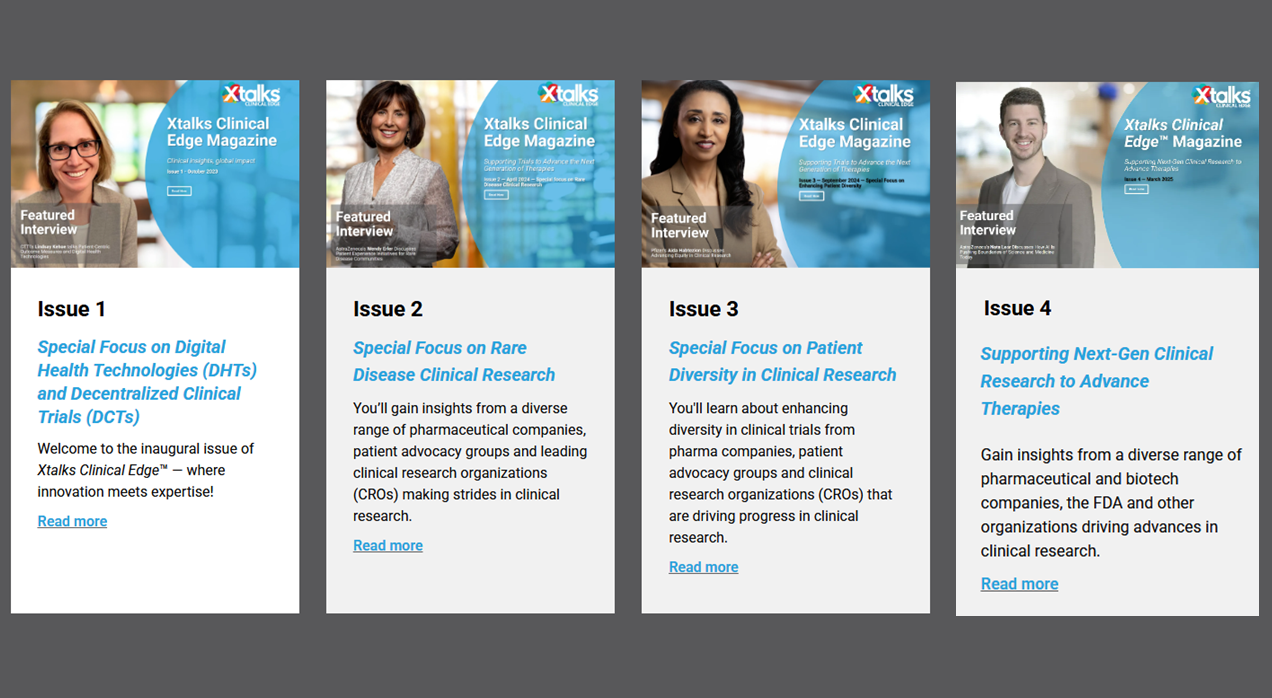As digital marketers, professionals and content creators seek to stay competitive in the workforce and close sales faster, webinars are seen as a powerful tool for personalizing interactions between brands, customers and prospects.
From quicker customer onboarding to more conversion opportunities – webinars have immense value when it comes to brand awareness and thought leadership growth. But what does the future hold?
As digital marketing continues to evolve, so does the role of webinars in the industry. In the coming years, we at Xtalks expect to see some exciting changes in the world of webinars. Here are a few key trends and predictions:

1) Webinars As Content Hubs
Webinars can serve as content hubs because they are media and content rich. You can use webinars to create a series of content around a specific topic or theme, since they are usually an hour long and can be subdivided into other pieces of unique content such as:
- On-Demand webinar
- Summaries
- Social media snippets
- Blogs
- Videos
- Podcasts
- eBooks
- Infographics
- Whitepapers
- SlideShare
By repurposing your webinar into different forms of content, you can increase the reach of each specialized version of content and engage with your audience in new ways. Be sure to optimize your content for each format to make it more shareable and discoverable.
2) Double Broadcasts
Double broadcasting with webinars typically refers to broadcasting a live webinar to two different geographical audiences. While it is common to have one webinar timed to target both multiple geographical regions successfully (e.g., 11am EDT in North America / 4pm BST in Europe), we’ve found that a targeted European broadcast (e.g., 9am EDT/2pm BST in Europe) followed by a rebroadcasted (or completely live) second event that is targeted for a North American audience (e.g., 1pm EDT) will consistently outperform a webinar that was only broadcasted once.
3) Recorded Webinar Automation
Recorded webinar automations offer many benefits, including the ability to reach a global audience around the clock, as well as the ability to scale marketing efforts and optimize lead generation.
Automated webinars are pre-recorded presentations that are delivered on a schedule using specialized software.
One of the main advantages of automated webinars is their scalability. Unlike in-person events or live webinars, automated webinars can be delivered to an unlimited number of people without the need for additional resources or personnel. This makes them a cost-effective way to generate leads and build brand awareness.
Another benefit of automated webinars is their ability to optimize lead generation. By tracking and analyzing audience behavior, marketers can identify which segments of the audience are most engaged and likely to convert. This information can be used to personalize follow-up communication and nurture leads more effectively.
Webinars can also be partially automated, meaning that a presentation can be recorded and a Q&A session can be live. This works especially well when combined with the double broadcasts we mentioned above.
4) Accessible Webinars
Accessibility for future webinars is important because it ensures that everyone can participate, regardless of their physical abilities. According to the World Health Organization, an estimated 1.3 billion people worldwide experience some form of disability, which means that a significant portion of the population may face barriers to accessing webinars that are not designed with accessibility in mind.
Accessibility can take many forms, including open captioning for individuals with hearing impairments, audio descriptions for those with visual impairments and the use of accessible technology such as screen readers and voice recognition software. By incorporating these elements into webinar design, marketers can ensure that their content is accessible to as many people as possible, and that they are not inadvertently excluding any potential audience members.
In addition to being more inclusive, accessible webinars can also improve engagement and retention. For example, open captioning can help viewers follow along more easily and retain information better, while audio descriptions can provide context for visual elements that may be missed by those with visual impairments. Translated captions, transcriptions ASL interpretation and translated webinars are all options that are available to Xtalks clients.
By making webinars more accessible, not only are we doing our part in creating a more inclusive society, but we are also making our content more engaging and impactful for a wider audience.
5) Interactive and Personalized Webinars
Harnessing the power of interactivity can add an exciting, interactive element to webinars and motivate attendees to participate actively. One of the main benefits of interactive webinars is the increased level of participation they can create. Attendees are no longer passive spectators, but active participants in the learning process. This not only helps retain their attention and improve retention of the material, but it also creates a more memorable and personalized experience overall.
Examples of interactive elements of a webinar include:
- Poll questions
- Q&A sessions
- Pre-registration questions
- Live commenting
- Handouts and worksheets
- Post-registration questions
In addition to traditional hosting platforms, webinars are increasingly being streamed on popular social media platforms such as Linkedin, allowing businesses and organizations to reach a wider audience than ever before. Attendees can share their success and progress on social media platforms, creating a sense of community and competition among peers. This not only helps spread the word about the event, but it can also generate valuable user-generated content and personal testimonials.
After attending a webinar, users could receive follow-up materials that are tailored to their interests and needs. For example, they might receive a summary of the webinar that highlights the parts most relevant to them, or receive additional resources that build on the content they just learned.
6) Cloud-Based Webinars
Cloud-based webinars have been a popular trend for several years and are likely to continue to be a preferred method of hosting webinars. The convenience of hosting a webinar in the cloud means that there is no need to download software in order to watch or participate in a live webinar. In addition, the host does not need to have their own infrastructure or hardware, as everything can be managed online.
While there are sometimes added advantages to using downloadable applications to host webinars, (i.e., the ability for attendees to phone in to the webinar), the cloud-based options are typically the most used to host a webinar. At Xtalks, for example, our webinar platform gives users options to either use cloud or downloadable versions of the webinar event.
7) Mobile-Optimized Webinars
Mobile webinars are quickly becoming the preferred way to access content. By making webinars mobile friendly, we can ensure that our content is accessible to a wide range of viewers no matter where they are. Mobile-friendly webinars can also be beneficial for remote workers and professionals who are always on the go yet still need access to content.
Mobile webinars have several advantages as they are often more interactive and engaging due to their use of touch-screen technology and embedded videos. They also provide a more personalized experience since users can customize the settings according to their preferences. Additionally, mobile webinars make it easier for viewers to participate in live Q&A sessions, polls and other interactive activities from anywhere in the world. While some cloud-based webinar platforms don’t have particularly mobile-friendly versions, downloadable apps can offer a more viewer-friendly experience.
8) Incorporating Video in Webinars
Incorporating video in webinars can enhance the overall experience for attendees and increase the effectiveness of the content being presented. Video allows for increased engagement as it is more engaging than text or audio alone. It allows for a more personal connection with the audience, which can lead to increased engagement and interest in the content being presented. Research has also shown that video content is more likely to be remembered than text or audio. Incorporating video in webinars can help improve the retention of the information being presented.
Video can be a powerful tool for demonstrating complex concepts, such as product demonstrations or visual aids. This can help to clarify difficult concepts and make the content more understandable for the audience. Video content can be easily shared and promoted on social media and other digital channels, which can increase the reach of the webinar and attract a wider audience.
When incorporating video in your webinar, it’s important to make sure the videos are of high quality and relevant to your audience. Additionally, it’s important to test the video in advance to ensure that it plays smoothly and doesn’t cause any technical issues during the webinar. Be sure to connect with an Xtalks account representative to discuss best practices when sharing videos during a live or recorded webinar.
9) Webinar Handouts
By incorporating handouts as a pre-registration lead magnet and live attendance engagement tool, you can increase the perceived value of your webinar and make it more appealing to potential attendees.
Offer a valuable handout as a pre-registration lead magnet to incentivize attendees to sign up for your webinar. This could be a checklist, workbook or other resource that is relevant to the webinar topic and provides value to the attendee. Promote the handout in your registration form, social media posts and email marketing to increase signups.
Provide a handout during the live webinar to increase attendee engagement and participation. This could be a worksheet or activity that attendees can fill out during the webinar to reinforce the content being presented. It could also be a reference guide that includes key takeaways and actionable steps that attendees can use after the webinar.
On an Xtalks webinar event page, handouts can be gated so that only webinar registrants can download the handout assets. This can serve as a reminder of the content presented during the webinar and provide attendees with a reference they can use in the future. You can also use this opportunity to promote related resources or products that align with the webinar topic.
Additionally, by providing valuable resources for live attendees or on-demand webinar viewers to use after the webinar. You can reinforce the key concepts presented during the webinar and there will be a greater likelihood that attendees will take action based on what they learned.
10) Webcam Use
Prior to the COVID-19 pandemic, a minority of Xtalks clients preferred using webcams during their presentations. The pandemic changed comfort levels with webcams as many people used webcams as a daily necessity for work and other activities. This increased comfort level may lead to people continuing to use webcams more excessively for many years to come. At Xtalks, a clear majority of our clients now prefer to use webcams during live webinars.
Conclusion
The future of webinars is bright, with a range of exciting trends and predictions on the horizon. By embracing new technologies, data analytics, niche-specific content and cloud-based platforms, companies can stay ahead of the game. Businesses must leverage the power of webinars to stay competitive in the digital age.
Xtalks hosts the largest collection of life science webinars on the internet and broadcasts more live, life science webinars, than any other organization. Learn how our team optimizes the webinar process here and if you have any questions about your next webinar marketing initiatives, please contact us for more information.












Join or login to leave a comment
JOIN LOGIN